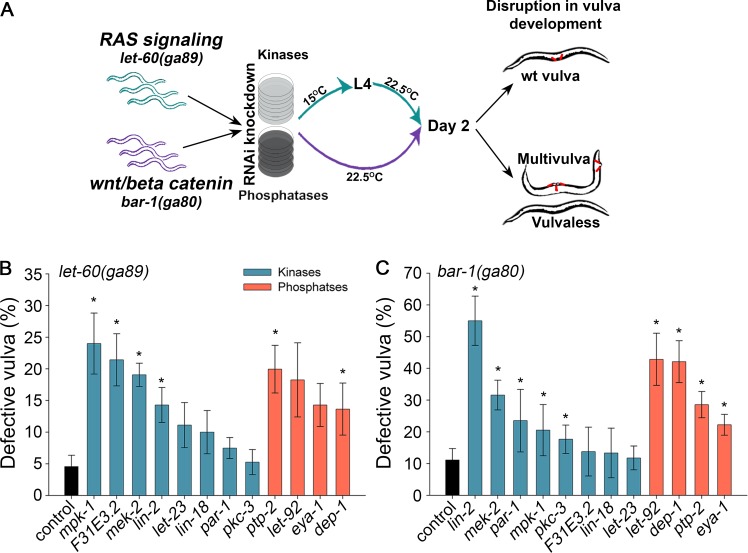Fig 4. RNAi knockdown of C. elegans kinases results in variable effects on vulva development, while knockdown of C. elegans phosphatases results in more uniform effects.
A. Illustration of the experimental pipeline. Age-synchronized animals were grown on kinase/phosphatase specific RNAi-expressing bacteria at the indicated conditions. The percentage of animals showing a disrupted vulva development (Multivulva / Vulvaless) was scored at day 2 of adulthood. B. For each RNAi-treatment of a kinase (or phosphatase) in animals with perturbed RAS signaling, the percentage of animals with disrupted vulva phenotype was scored. Shown are the medians (± SEM) of at least 3 independent experiments. Four kinase treatments and two phosphatase treatments showed a significantly higher tendency for disrupted phenotype relative to control (p-values: mpk-1 p = 0.012, F31E3.2 p = 0.024, mek-2 p = 0.024, lin-2 p = 0.02, ptp-2 p = 4*10−3, dep-1 p = 0.046; Mann-Whitney test). C. Same as in B, for animals with perturbed wnt/beta-catenin signaling. Five kinase treatments and four phosphatase treatments showed a significantly higher tendency for disrupted phenotype relative to control (p-values: lin-2 p = 2.2*10−3, mek-2 p = 0.013, par-1 p = 0.018, mpk-1 p = 0.043, pkc-3 p = 8.6*10−3, let-92 p = 4.6*10−3, dep-1 p = 0.017, ptp-2 p = 0.027, eya-1 p = 0.023; Mann-Whitney test).

